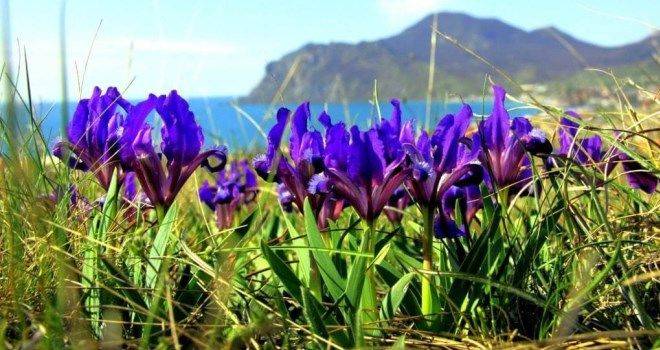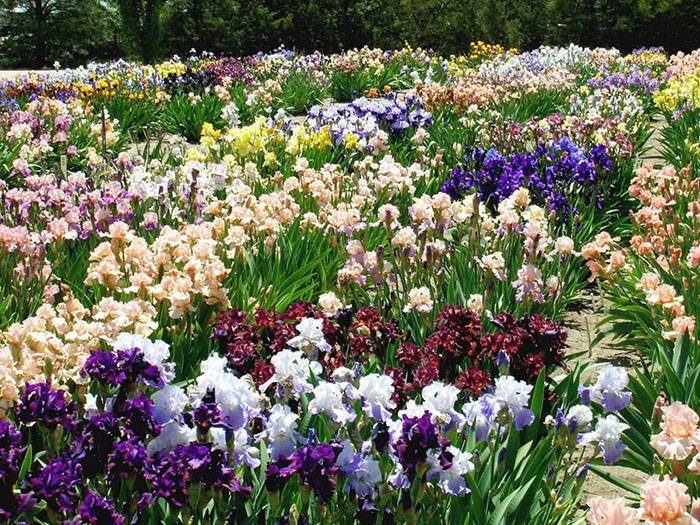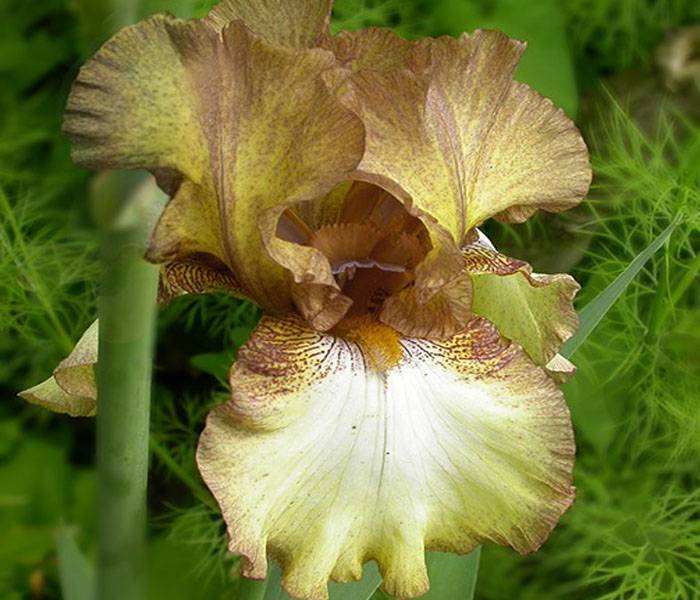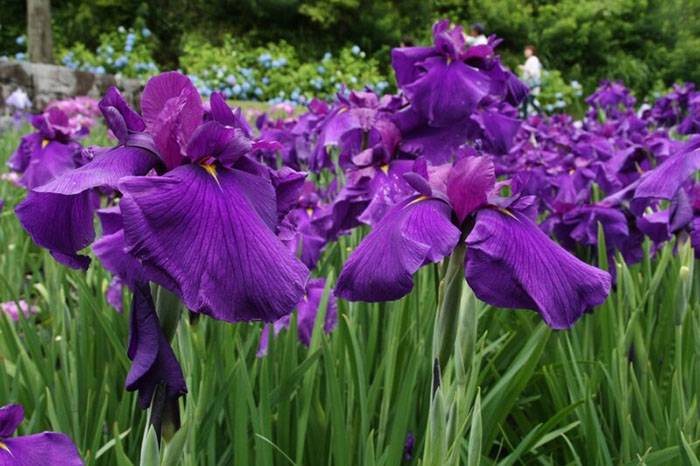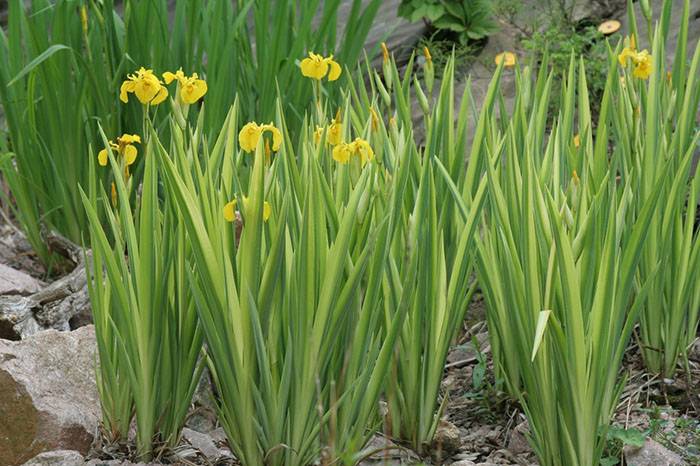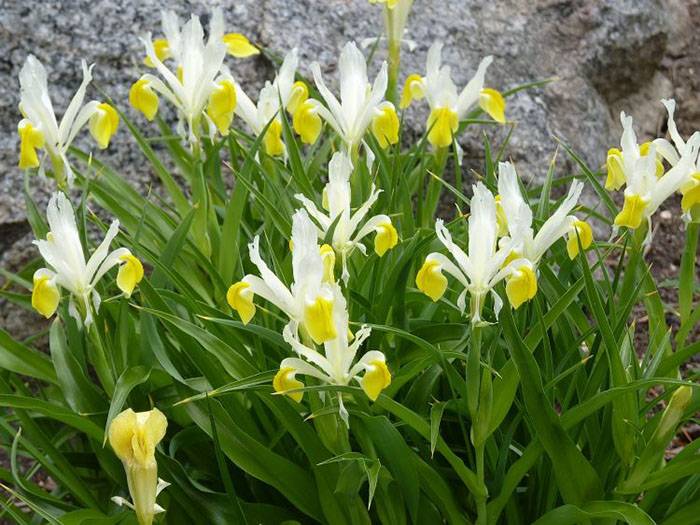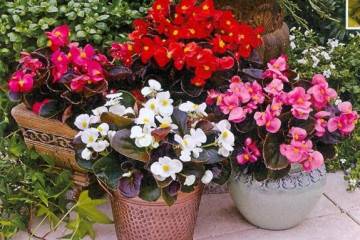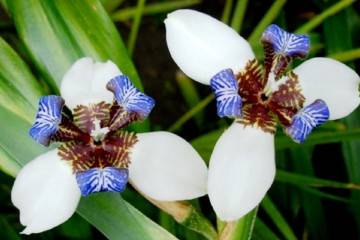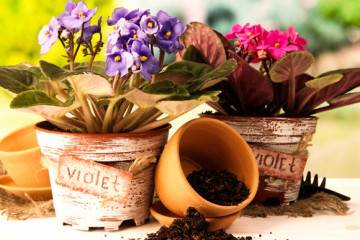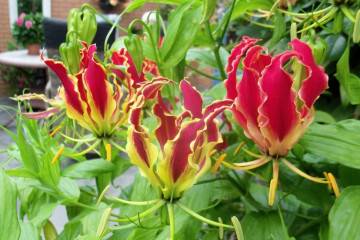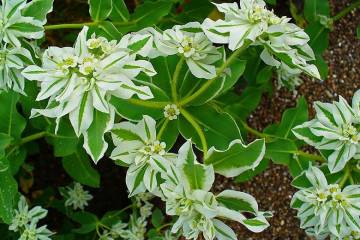Iris flower - types of ornamental plants
Content:
Iris is the flower of artists and kings, a plant with history. Its grace and sophistication has inspired painters, poets and composers. In ancient Rome, it was the flower of philosophers, for the French it symbolizes the awakening of nature, and for the Japanese - perseverance and courage. As a symbol of power, it adorns the coats of arms of the aristocrats, and the Romans named one of the cities Florence (Blooming), because in its vicinity the fields were strewn with irises. This beautiful flower will help make any area elegant, picturesque and unique.
Description of the iris plant: what is it
Walking along the blooming spring steppe, you can see what the field iris looks like. On sunny lawns, surrounded by feather grass and wild-growing tulips, steppe miniature irises are comfortably located. By crossing wild species specimens, numerous modern varieties have been obtained.
The branched inflorescence of this plant consists of six lobes, three of which are bent upward, and the other three are bent downward. On one peduncle, up to five flowers can open at the same time. In describing iris, it is worth mentioning that many varieties have a pleasant aroma.
The variety of shapes and colors of irises is temptingly huge. Even in ancient times, they were called rainbow flowers, and now, among tens of thousands of varieties, you can choose an instance of any shade and color of the rainbow.
Leaves are elongated, linear, straight or curved, xiphoid. The arrangement of the leaves is mainly basal, the veins are parallel to each other. The color ranges from dark green to gray-green. In some species, the leaf surface is glossy, in others it is matte.
The combination of delicate refined flowers and laconic strict leaves resembling a blade was noted in Japan, where the flower is considered a symbol of courage and stamina, but at the same time, iris personifies the innocent gentleness of the fair sex.
In Russia, these flowers are affectionately called "iris". And in some regions, they note the similarity of a flower with a cock's comb, calling it a cockerel.
What are irises
Among the huge assortment of irises, rhizome (bearded and beardless) and bulbous plants are distinguished. In turn, the bearded ones are subdivided by size into dwarf, medium-sized and tall.
Beardless types include the following varieties of irises:
- Siberian;
- Japanese;
- spuria (false);
- marsh.
Each group has features of structure and vegetation.
Rhizome
Perennial rhizome plants grow rapidly and multiply easily. One rhizome can give life to several plants - this is how dense iris clumps are formed.
Reproduction using rhizomes is carried out in spring and autumn. Iris rhizomes divided for planting can be purchased at garden centers or ordered by mail - they easily tolerate transportation and take root well.
Several groups of tall, medium-sized and dwarf species will adorn the surroundings for many years, and their flowering will not stop throughout the season. The first to bloom are dwarf specimens, demonstrating a luxurious combination of colors, followed by medium-sized ones, then tall beauties bloom. Flowers look good against the background of conifers.
Good combinations with other perennials. Daylilies and irises of the same tone, for example, yellow, look exquisite together. It is easy to choose the color combination of irises with peonies and perennial poppies.
Bearded
The largest group includes irises with bristly outgrowths on the outer petals of flowers (beards). The villi often contrast with the color of the flower, giving it a special charm.
Among them are giants and dwarfs. Tall specimens are used in the garden as solo plants. Medium-sized ones have large, like large irises, flowers and unpretentiousness of undersized species. Small irises, distinguished by their vitality, are often used to decorate the foreground of flower beds.
The color gamut is wide, there are specimens of two-color, iridescent, with contrasting veins. For undersized species, a pattern of dark strokes, dots and a border - plikat is characteristic.
A short list of popular varieties of bearded irises:
- The night owl is one of the best dark varieties. Strong peduncle up to 120 cm in height. The life span of a flower is five days.
- Fayans de jian is a magnificent white flower with a bluish-black border on the lower petals. Yellow beards highlight it, and wavy petals add airiness.
- Patina - looks completely unusual with its olive brown petals. A plant with a lot of buds.
Beardless
Representatives of the beardless irises group have smooth perianths without hairs or ridges. The flowers are odorless. Leaves are thin, narrowly visible. The rhizomes are thin and less branched than those of the bearded ones. Depending on the place of origin or due to special characteristics, they are divided into groups.
Siberian
Siberian beardless iris, a plant with a high peduncle and flowers that retain freshness for a long time, is good for cutting. In the color of the flowers of the common iris, white and blue tones with a lilac tint prevail, and the spots at the base have a white-yellow color. Modern varieties are more pretentious - with corrugated petals and an unusual palette of pink and wine shades.
In the garden, they are valued for their ability to withstand low temperatures and good wind resistance (flower stalks do not need a garter). No less important is resistance to bacteriosis, due to which these species do not rot. In addition, the foliage of persistent Siberians retains its decorative effect throughout the summer.
They are planted in bright places. Often located near water bodies where there will be enough moisture.
The names of Siberian varieties of the new generation:
- Lady Vanessa is a tall, richly flowering variety. Delicate ruffled petals in violet-purple hues. A plant with high frost resistance.
- Moon Silk is an elegant white and yellow flower with dark veins. The edges of the petals are grooved. Has a light sweet aroma.
- Rikugi Sakura has an interesting flower structure.Pink-lilac petals of an unusual drooping shape. The bush is compact, low.
Japanese
In the garden classification, xiphoid irises are called Japanese. These samurai flowers have been cultivated in Japan for hundreds of years. When the country celebrates the holiday of future warriors, houses and clothes are decorated with irises, and they also prepare rice balls wrapped in iris leaves - temaki.
In nature, Japanese irises are inhabitants of wet meadows, so regular watering is important for them in the heat. Their flat flowers bloom in May. The traditional color is deep purple with a bright yellow stripe, but there are also many large-flowered forms of various colors.
Common varieties:
- Crystal Halo blooms in summer. Large light purple flowers with a white border, yellow spots on the petals. Each peduncle has at least three flowers.
- Vasily Alferov is a variety with large flowers up to 24 cm in diameter. The flower is deep purple, velvety, with a bright yellow eye. One of the most frost-resistant varieties.
Spuria (false)
These subspecies are low, medium and tall. Interestingly, flowering time is related to the height of the plant. There is a pattern: the lower the spuria, the earlier it blooms. Comfortable for gardeners is the property of this species to grow in one place for up to 10 years without prejudice to flowering.
The best varieties of irises spuria:
- Archie Owen's bright golden color has corrugated petal edges. Leaves are erect, xiphoid.
- Chokolat Fudge is interesting for its original colors. The petals, yellow with a brown frame, reveal the whole range of transition from brown to golden.
Swamp
The rapidly growing and regularly blooming marsh iris is unpretentious, can grow in partial shade and does not require special care. Grows well in moist soil and shallow water. It grows without problems in one place for many years.
Ornamental varieties often found in gardens:
- Holden Clow is a delightfully vibrant strain with a rich red-brown mesh on bright yellow petals. Heat-loving plant, prefers well-lit areas.
- Variegata is a variety with vertical yellow-cream stripes on the leaves. Variegation is especially pronounced in spring. The flowers are yellow.
Flowers irises of the marsh variety are used in landscape design in combination with sedge to decorate ponds, fountains and man-made waterfalls.
Bulbous
Bulbous irises differ from rhizome irises by their modest size. Among them there are early flowering miniature species and large-flowered specimens that bloom in summer. Flowering is often accompanied by a delicate aroma. Leaves are narrow, subulate.
There are three groups:
- Reticulata - short plants up to 15 cm tall. They bloom in early spring. Denford's iridodictiums, belonging to this group, bloom in the first half of April, and overgrow with leaves by May. Therefore, at the beginning of spring, bulbous irises look very unusual - as if cut flowers were stuck into the ground. Flowering lasts no more than two weeks. Bulbous species look good next to hosts with dense foliage.
- Xiphium is a tall iris that blooms in summer and propagates easily by seeds. Representatives of this group do not like frequent transplants and excess moisture.
- Juno is a perennial plant with small bulbs. Height 20-40 cm. Leaves are elongated, rather wide. The flowers are large, light lilac or pale yellow. The plant is thermophilic.
Early bulbous irises look harmoniously with groves, snowdrops and crocuses.
There is even the concept of "iris color".It is a pink lilac shade that is used in combination with pale pink, pale yellow, red and purple.
The main problems in growing
Caring for the plant is so simple that even a child can handle it. Sometimes gardeners note such a nuisance as a long absence of flowering. There are several reasons for this phenomenon.
Planting too deep will delay flowering. Ideally, a third of the root collar should be above the ground. The deep rhizome does not have time to warm up enough for active growth and the establishment of a color arrow.
Closely located plants develop rapidly and begin to oppress neighboring specimens. When planting irises, you need to take into account their size and plant old bushes every 5 years.
Lack of lighting will also affect flowering. Most members of the family of iris are photophilous. Hardy plants will develop in the shade, but will not be able to bloom.
Wintering conditions are important for plants. In cold regions, most varieties need shelter. Moreover, if you insulate the plant too early, it can rot, and if you are late with shelter, the flower buds will freeze.
Even stubborn irises can be damaged by insects and diseases. Experienced gardeners are advised to regularly inspect the flower garden and, if spots or damage are found on the plant, take immediate action.
Balance is important when fertilizing with fertilizers. With a lack of them, the soil is depleted. At the same time, an excess of nitrogen fertilizers forces plants to form many powerful leaves in the absence of peduncles.
Iris is an excellent decorative element for any garden plot. Using this fast growing flower, it is easy to create an atmosphere of comfort and beauty in the garden.

